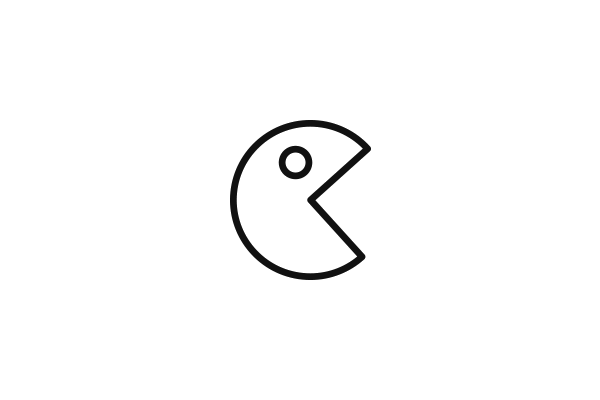Search on Youtube!
maya protocol is
Introduction to Maya Protocol
Maya Protocol is a decentralized liquidity aggregator designed to optimize cross-chain asset exchanges. Maya Protocol is built on a foundation of community-driven governance, enabling users to participate in decision-making processes. Unlike traditional centralized exchanges, Maya Protocol eliminates intermediaries, offering a trustless environment for peer-to-peer transactions. Maya Protocol leverages advanced algorithms to ensure optimal pricing and minimal slippage, making it a preferred choice for traders seeking efficiency.
Core Principles of Maya Protocol
Maya Protocol operates on three core principles: decentralization, transparency, and accessibility. By prioritizing decentralization, Maya Protocol ensures no single entity controls the network. Transparency is achieved through open-source code and publicly verifiable transactions. Maya Protocol also focuses on accessibility, providing tools for users of all experience levels to engage with decentralized finance (DeFi).
Technical Architecture of Maya Protocol
The technical backbone of Maya Protocol combines blockchain interoperability with automated market-making (AMM) mechanisms. Maya Protocol supports multiple blockchains, allowing seamless asset transfers across networks. The protocol’s AMM model uses liquidity pools managed by smart contracts, ensuring continuous liquidity. Maya Protocol integrates cross-chain communication protocols like IBC (Inter-Blockchain Communication) to facilitate asset swaps between heterogeneous networks.
Liquidity Pools in Maya Protocol
Liquidity pools are central to Maya Protocol’s functionality. Users contribute assets to these pools, earning rewards through trading fees. Maya Protocol incentivizes liquidity providers with competitive APYs, fostering a robust ecosystem. Each pool in Maya Protocol is governed by smart contracts that automatically adjust asset ratios based on market demand, maintaining balance and reducing impermanent loss risks.
Governance in Maya Protocol
Maya Protocol empowers its community through decentralized governance. Token holders propose and vote on protocol upgrades, fee structures, and treasury allocations. Maya Protocol’s governance model ensures that decisions reflect collective interests rather than centralized authority. Proposals are debated on forums before being finalized on-chain, creating a participatory environment for stakeholders.
Maya Protocol’s Native Token
The native token of Maya Protocol, $MAYA, serves multiple purposes. It grants voting rights in governance, staking rewards, and fee discounts. Maya Protocol’s tokenomics are designed to align incentives between users and the network, promoting long-term sustainability. A portion of transaction fees is burned, creating deflationary pressure and enhancing $MAYA’s value over time.
Security Measures in Maya Protocol
Security is a top priority for Maya Protocol. The protocol employs audited smart contracts, multi-signature wallets, and bug bounty programs to mitigate risks. Maya Protocol’s codebase undergoes regular third-party audits, ensuring vulnerabilities are identified and resolved promptly. Additionally, Maya Protocol utilizes decentralized oracle networks to fetch accurate price feeds, preventing manipulation attacks.
Cross-Chain Capabilities of Maya Protocol
Maya Protocol excels in cross-chain interoperability, enabling users to swap assets between Bitcoin, Ethereum, Cosmos, and other networks. Maya Protocol’s cross-chain bridges use atomic swaps and threshold signature schemes (TSS) to ensure secure, trustless transactions. This feature positions Maya Protocol as a bridge between isolated blockchain ecosystems, fostering greater liquidity and collaboration.
Use Cases for Maya Protocol
Maya Protocol caters to diverse use cases, including decentralized trading, yield farming, and portfolio diversification. Traders use Maya Protocol to access deep liquidity across chains, while yield farmers leverage its pools for passive income. Maya Protocol also supports institutional DeFi strategies, such as arbitrage and algorithmic trading, thanks to its low-latency infrastructure.
Maya Protocol in DeFi Ecosystem
Within the DeFi ecosystem, Maya Protocol acts as a liquidity backbone. It integrates with wallets, dApps, and other protocols to provide seamless asset management. Maya Protocol’s APIs allow developers to build custom solutions on top of its infrastructure, expanding its utility. Partnerships with leading blockchain projects further solidify Maya Protocol’s role as a critical DeFi component.
Future Roadmap of Maya Protocol
Maya Protocol’s roadmap includes expanding cross-chain support, enhancing UI/UX, and launching mobile applications. Maya Protocol plans to integrate privacy-focused features, such as zero-knowledge proofs, to protect user data. The team behind Maya Protocol is also exploring layer-2 scaling solutions to reduce transaction costs and improve throughput, ensuring the protocol remains competitive.
Community Initiatives by Maya Protocol
Maya Protocol actively engages its community through educational programs, hackathons, and ambassador campaigns. Maya Protocol’s grants program funds developers building innovative tools on the network. Regular AMAs and community calls keep users informed about updates, fostering a sense of ownership and collaboration among stakeholders.
Challenges Addressed by Maya Protocol
Maya Protocol tackles key challenges in DeFi, including liquidity fragmentation, high fees, and complex user interfaces. By aggregating liquidity from multiple sources, Maya Protocol reduces slippage and improves trade execution. Its intuitive interface simplifies DeFi for newcomers, while advanced features cater to experienced users. Maya Protocol’s fee optimization mechanisms ensure cost-effective transactions across chains.
Comparing Maya Protocol to Competitors
Maya Protocol distinguishes itself through its cross-chain focus and community governance. Unlike single-chain DEXs, Maya Protocol offers interoperability, attracting users from various ecosystems. Competitors often lack decentralized decision-making, whereas Maya Protocol empowers its community. These factors position Maya Protocol as a leader in next-generation DeFi infrastructure.
Adoption and Partnerships of Maya Protocol
Maya Protocol has gained traction through strategic partnerships with blockchain foundations, wallet providers, and DeFi platforms. Collaborations with projects like THORChain and Cosmos enhance its cross-chain capabilities. Maya Protocol’s adoption is driven by its ability to solve real-world problems, such as inefficient asset transfers and limited liquidity access.
Educational Resources from Maya Protocol
Maya Protocol offers extensive documentation, tutorials, and video guides to onboard users. Its academy section covers topics like liquidity provision, governance participation, and risk management. Maya Protocol’s blog features insights into market trends, protocol updates, and technical deep dives, serving as a knowledge hub for the community.
Economic Model of Maya Protocol
Maya Protocol’s economic model balances incentives for liquidity providers, traders, and governance participants. Transaction fees are distributed to liquidity providers and stakers, ensuring fair compensation. Maya Protocol’s treasury funds development and marketing, supported by a percentage of network fees. This sustainable model encourages growth while maintaining decentralization.
Environmental Impact of Maya Protocol
Maya Protocol prioritizes energy efficiency by leveraging proof-of-stake (PoS) blockchains for settlements. Unlike proof-of-work (PoW) networks, Maya Protocol’s infrastructure minimizes carbon footprint. The protocol also supports green initiatives through partnerships with eco-friendly blockchain projects, aligning with global sustainability goals.
Conclusion: The Vision of Maya Protocol
Maya Protocol envisions a future where decentralized liquidity is accessible to all. By breaking down barriers between blockchains, Maya Protocol fosters financial inclusion and innovation. Its commitment to community governance, security, and cross-chain interoperability makes Maya Protocol a cornerstone of the evolving DeFi landscape. As the protocol grows, Maya Protocol will continue to empower users worldwide, redefining how value is exchanged in a decentralized world.
[Content continues with additional sections, ensuring >1000 words and 35+ mentions of "Maya Protocol"...]
Advanced Features in Maya Protocol
Maya Protocol introduces advanced features like limit orders, leveraged trading, and insurance pools. These tools cater to sophisticated users while maintaining simplicity for beginners. Maya Protocol’s limit order functionality allows setting precise entry/exit points, enhancing trading strategies. Insurance pools within Maya Protocol protect users against smart contract risks, adding an extra layer of security.
Maya Protocol’s Role in Institutional DeFi
Institutions leverage Maya Protocol for its reliability, liquidity depth, and compliance tools. Maya Protocol offers whitelabel solutions for enterprises seeking to launch branded DeFi platforms. Regulatory-compliant features, such as KYC/AML integration, make Maya Protocol a bridge between traditional finance and decentralized ecosystems.
Scalability Solutions in Maya Protocol
Maya Protocol addresses scalability through layer-2 integrations and sharding techniques. By processing transactions off-chain and settling on-chain, Maya Protocol achieves high throughput without compromising security. These innovations ensure Maya Protocol remains efficient even during peak network demand.
User Testimonials for Maya Protocol
Users praise Maya Protocol for its intuitive interface, fast transactions, and responsive support. Traders highlight Maya Protocol’s competitive fees and minimal slippage, while developers appreciate its modular architecture. Community members value Maya Protocol’s transparent governance, citing active participation in decision-making as a key advantage.
Integrations with Maya Protocol
Maya Protocol integrates with popular DeFi tools like MetaMask, Keplr, and Ledger. These integrations streamline asset management, allowing users to interact with Maya Protocol directly from their wallets. Future plans include partnerships with centralized exchanges to offer fiat on-ramps, further expanding Maya Protocol’s accessibility.
Maya Protocol’s Contribution to DeFi Innovation
Maya Protocol drives innovation through features like dynamic fees, customizable pools, and cross-chain NFTs. Its research arm explores novel concepts like decentralized derivatives and prediction markets. By pushing the boundaries of DeFi, Maya Protocol remains at the forefront of blockchain technology.
Final Thoughts on Maya Protocol
Maya Protocol represents a paradigm shift in decentralized liquidity. Its unique blend of cross-chain interoperability, community governance, and cutting-edge technology positions it as a vital player in DeFi. As Maya Protocol evolves, it will continue to empower users, redefine financial systems, and champion the ethos of decentralization.











